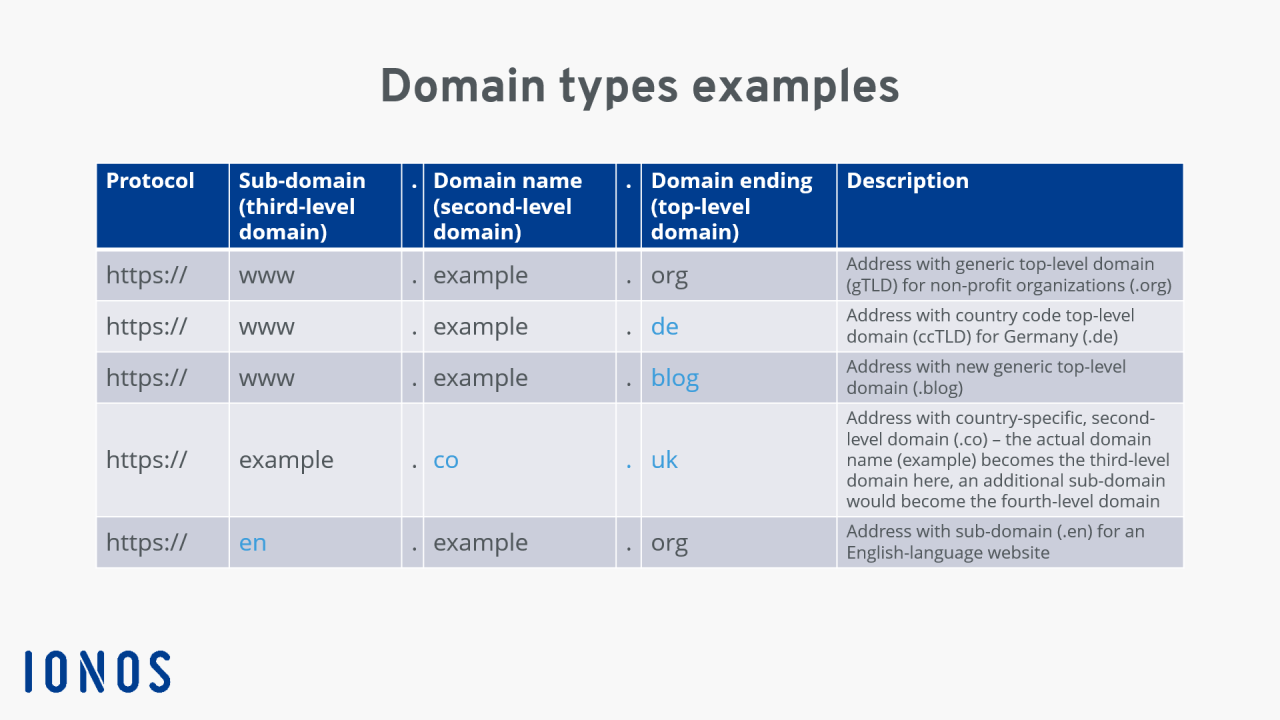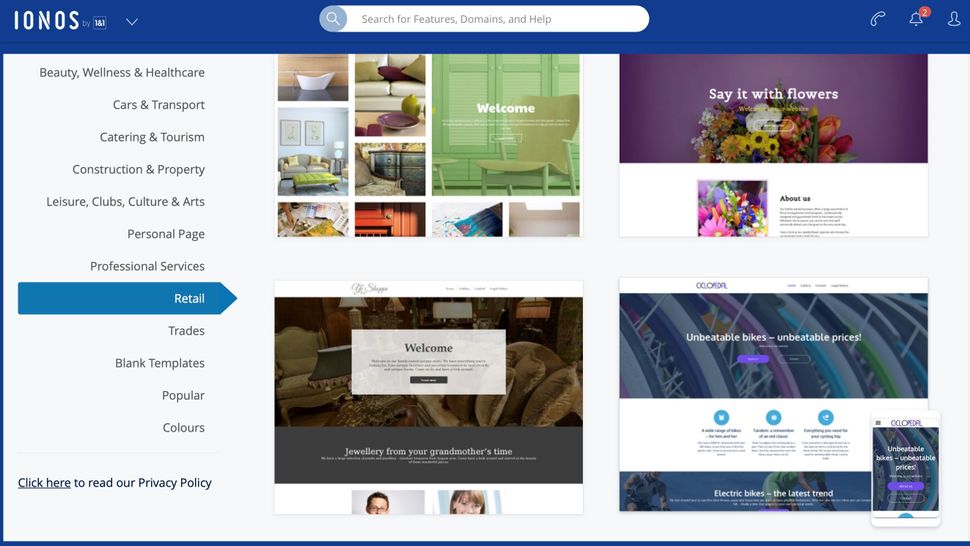Available web domains are the digital real estate that forms the foundation of your online presence. Choosing the right domain name is crucial for building a strong brand, attracting visitors, and achieving online success. This guide delves into the intricacies of domain name availability, exploring everything from the registration process to the impact on and branding.
Understanding domain name availability is essential for anyone building a website, launching a business, or establishing an online identity. It’s not just about finding a catchy name; it’s about securing a valuable asset that can help you stand out in the crowded digital landscape.
Domain Name Search Strategies
Finding the perfect domain name is crucial for establishing a strong online presence. A well-chosen domain name should be memorable, relevant to your brand, and available. This section explores effective strategies for finding available domain names, providing a list of domain name search tools and their functionalities, and illustrating the process with a flowchart.
Domain Name Search Tools
Domain name search tools are invaluable resources for discovering available domain names. These tools allow you to search for domain names based on s, check availability across various top-level domains (TLDs), and provide insights into domain name popularity and pricing.
- Domain Name Registrars: Domain name registrars, such as GoDaddy, Namecheap, and Google Domains, offer built-in search tools. These tools typically allow you to search for domain names, check availability, and view pricing information.
- Dedicated Domain Name Search Tools: Several dedicated domain name search tools provide advanced features and insights. Some popular options include:
- Namecheap’s Domain Name Search: This tool offers a comprehensive search functionality, including suggestions and domain name availability across various TLDs. It also provides insights into domain name popularity and pricing.
- Domain.com’s Domain Name Search: Domain.com offers a user-friendly search interface with advanced filtering options. It allows you to search for domain names based on s, TLDs, and specific criteria, such as availability, pricing, and popularity.
- Name.com’s Domain Name Search: Name.com provides a similar search experience to Domain.com, offering advanced filtering options and insights into domain name availability, pricing, and popularity.
Domain Name Search Flowchart
The domain name search process can be visualized as a flowchart, outlining the steps involved in finding an available and suitable domain name:
[Insert flowchart here. The flowchart should depict the following steps:
1. Start: Begin the domain name search process.
2. Brainstorm s: Generate a list of relevant s related to your brand, products, or services.
3. Search for Domain Names: Use domain name search tools to check availability for the generated s and variations.
4. Evaluate Availability: Determine if the desired domain names are available.
5. Check Domain Name Popularity: Analyze the popularity and usage of potential domain names.
6. Assess Domain Name Pricing: Evaluate the cost of registering the desired domain names.
7. Select a Domain Name: Choose a domain name that meets your requirements, including availability, relevance, and pricing.
8. Register the Domain Name: Secure the chosen domain name by registering it with a domain name registrar.
9. End: The domain name search process is complete.]
Domain Name Availability and
A domain name is the address of your website on the internet. Choosing the right domain name is crucial for your website’s success, as it impacts both user experience and search engine optimization (). A well-chosen domain name can enhance your website’s visibility in search engine results pages (SERPs) and drive more organic traffic.
Domain Name Availability and , Available web domains
Domain name availability plays a significant role in . It directly influences how easily search engines can crawl and index your website. Here are some key factors related to domain name availability that impact performance:
* Domain Age: Older domains tend to have more authority and trust in the eyes of search engines. This is because they have had more time to build backlinks and accumulate a track record of positive signals.
* Domain History: The past usage of a domain can impact its . If a domain has been previously used for spammy or low-quality websites, it may carry a negative reputation, making it harder to rank well in search results.
* Domain Extensions: While the .com extension is generally considered the most popular and trusted, other extensions like .net, .org, and country-specific extensions (e.g., .co.uk) can also be effective for . The choice of extension should align with your website’s target audience and industry.
* Domain Name Relevance: A domain name that accurately reflects your website’s content and target s is essential for . Search engines use domain names as a signal to understand the topic of your website.
* Domain Name Length: Shorter domain names are generally easier to remember and type, which can improve user experience and potentially benefit . However, the length of the domain name is not a primary ranking factor.
* Domain Name Memorability: A memorable domain name can help your website stand out from competitors and make it easier for users to share your website’s address. This can indirectly contribute to by increasing brand awareness and organic traffic.
Best Practices for Selecting a Domain Name
Here are some best practices for selecting a domain name that enhances visibility:
* Choose a Relevant Domain Name: Select a domain name that clearly reflects your website’s content and target s.
* Keep It Short and Simple: Opt for a domain name that is easy to remember and type.
* Avoid Hyphens and Numbers: While hyphens and numbers are allowed in domain names, they can make them harder to remember and may negatively impact .
* Consider Brandability: Choose a domain name that is memorable and reflects your brand identity.
* Check for Availability: Ensure the domain name you want is available and not already registered by someone else.
* Research Domain History: Before purchasing a domain, check its history to see if it has been used for any suspicious or low-quality websites.
* Protect Your Brand: Register variations of your domain name to prevent competitors from using them.
* Consider Domain Extensions: Choose a domain extension that is relevant to your target audience and industry.
Domain Name Availability and Website Security: Available Web Domains
While domain name availability is a primary concern when starting a website, it’s equally important to consider the security implications of your choice. A domain name can have a significant impact on the security of your website, and choosing a name that doesn’t prioritize security can lead to vulnerabilities.
Domain name availability and website security are closely intertwined. Your domain name can directly influence the security of your website, especially in the context of phishing, social engineering, and other cyberattacks.
Security Risks Associated with Domain Name Choice
Choosing a domain name that is easy to remember or spell can make it more susceptible to phishing attacks. This is because attackers can easily create look-alike domains that are very similar to the legitimate one, making it difficult for users to distinguish between the two. For instance, an attacker might register a domain name like “amazon.com” or “paypal.com” to trick users into providing their sensitive information.
- Phishing: Attackers often use similar domain names to trick users into visiting malicious websites. For example, a website might use a domain name like “amaz0n.com” or “paypa1.com” to lure unsuspecting users.
- Typosquatting: This is a type of phishing attack where attackers register domain names that are similar to popular websites, often with typos or slight variations in spelling. For example, an attacker might register a domain name like “googl.com” or “facebbok.com” to target users who accidentally misspell the real website address.
- Social Engineering: Domain names can be used to manipulate users into clicking on malicious links or downloading malware. For example, a website might use a domain name that appears legitimate, such as “microsoft-update.com,” to trick users into installing malicious software.
Securing Your Domain Name and Website
It’s crucial to take steps to secure your domain name and website to mitigate the risks associated with domain name choice.
- Choose a Strong Domain Name: Select a domain name that is unique, memorable, and difficult to misspell. Avoid using common misspellings or variations of popular websites.
- Enable Two-Factor Authentication (2FA): 2FA adds an extra layer of security by requiring users to provide two forms of authentication, such as a password and a code sent to their phone. This makes it much harder for attackers to gain access to your account, even if they have your password.
- Use Strong Passwords: Create strong passwords that are at least 12 characters long and include a mix of uppercase and lowercase letters, numbers, and symbols. Avoid using personal information or common words in your passwords.
- Install a Security Plugin: Use a security plugin to protect your website from malicious attacks. Security plugins can help to detect and block threats, prevent brute force attacks, and secure your website from other vulnerabilities.
- Keep Your Website Software Updated: Regularly update your website software, including the WordPress core, plugins, and themes. Updates often include security patches that fix vulnerabilities and protect your website from attacks.
- Implement SSL/TLS: Secure your website with an SSL/TLS certificate. This encrypts communication between your website and visitors, protecting sensitive information like passwords and credit card details.
- Regularly Back Up Your Website: Create regular backups of your website data. This will allow you to restore your website in case of a data loss or security breach.
Domain Name Availability and Legal Considerations

Choosing a domain name involves more than just finding a catchy and available option. It’s crucial to understand the legal aspects of domain name registration to avoid potential issues and protect your online presence. This section delves into the legal considerations associated with domain name selection.
Trademark Issues
Trademark infringement occurs when someone uses a trademark that is similar to another’s, potentially confusing consumers. This can happen with domain names, leading to legal action.
It’s essential to conduct thorough trademark searches before registering a domain name. This involves checking whether a similar trademark is already registered for the same or related goods or services. You can use resources like the United States Patent and Trademark Office (USPTO) website or specialized trademark search engines.
If you find a similar trademark, consider the following:
- If the trademark is registered, it’s generally best to avoid using a similar domain name to prevent potential infringement claims.
- If the trademark is unregistered, it’s still advisable to proceed with caution. Unregistered trademarks can still be protected, and the owner may have a claim for infringement if they can prove the trademark is being used in commerce.
“Even if a trademark is not registered, it can still be protected under common law if it is used in commerce and is distinctive.”
Domain Name Registration
Domain name registration involves obtaining the rights to use a specific domain name for a certain period. This process typically involves registering with a domain name registrar, which is a company authorized to handle domain name registration.
Here are key legal aspects to consider during domain name registration:
- Terms of Service: Domain registrars have terms of service that govern the use of registered domain names. It’s crucial to understand these terms, which may include restrictions on the content allowed on websites hosted on the domain, limitations on transferring the domain, and procedures for dispute resolution.
- Domain Name Disputes: Disputes can arise regarding domain name ownership. For instance, if two parties claim ownership of the same domain name, they can initiate a dispute resolution process through organizations like the World Intellectual Property Organization (WIPO).
- Domain Name Hijacking: This occurs when someone illegally takes control of a domain name. This can happen through phishing scams, hacking, or exploiting vulnerabilities in the domain name system (DNS).
“It’s important to choose a reputable domain registrar and to protect your account information to prevent domain name hijacking.”
Domain Name Availability and Future Trends
The domain name industry is constantly evolving, driven by technological advancements and changing user behavior. Understanding emerging trends in domain name availability is crucial for businesses and individuals alike. This section explores the impact of new technologies on domain name selection and offers insights into future predictions for the domain name industry.
Impact of New Technologies on Domain Name Selection
New technologies are significantly influencing domain name selection. The rise of decentralized technologies like blockchain and the emergence of new top-level domains (TLDs) are reshaping the landscape.
- Blockchain-based Domains: Blockchain technology allows for the creation and management of decentralized domain names, offering greater security, transparency, and user control. These domains, often referred to as “crypto domains,” are not subject to traditional domain name registrar regulations, opening up new possibilities for individuals and businesses. Examples include Ethereum Name Service (ENS) and Unstoppable Domains.
- New Top-Level Domains: The introduction of new TLDs beyond the traditional .com, .net, and .org has expanded the domain name space. Businesses can now register domains that reflect their specific industry or niche, enhancing brand recognition and website visibility. Examples include .tech, .shop, .app, and .ai.
Future Predictions for the Domain Name Industry
The domain name industry is expected to witness continued growth and innovation. Here are some key predictions:
- Increased Demand for Short and Memorable Domains: As the internet becomes increasingly crowded, short and memorable domain names will be highly sought after. This trend will drive up the value of premium domain names, particularly those with strong brand recognition.
- Growth of Decentralized Domain Registries: Blockchain-based domain registries are expected to gain popularity, offering greater control and security to users. This shift could challenge the dominance of traditional domain name registrars.
- Integration of Artificial Intelligence (AI): AI will play a crucial role in automating domain name selection and management. AI-powered tools can analyze search trends, competitor data, and user behavior to suggest relevant and available domain names.
Domain Name Availability and Business Strategy
Domain name availability is not just a technical detail; it’s a strategic element that can significantly impact a business’s success. Choosing the right domain name can attract customers, enhance brand recognition, and contribute to long-term growth.
Domain Name Availability in Competitive Analysis
A thorough understanding of domain name availability is crucial for effective competitive analysis. This involves examining the domain names used by competitors to gain insights into their strategies and market positioning.
- Identifying Competitors’ Online Presence: By searching for domain names related to your industry and target audience, you can uncover competitors you may not have known about. This helps you understand the competitive landscape and identify potential threats.
- Analyzing Competitor Strategies: The domain names competitors use can reveal their target market, brand positioning, and marketing strategies. For example, a competitor using a domain name with a specific geographic location might indicate a focus on regional markets.
- Identifying Opportunities for Differentiation: By understanding the domain names already in use, you can identify opportunities to differentiate your brand and stand out from the competition. This might involve choosing a domain name that emphasizes a unique selling proposition or targets a specific niche.
Strategies for Leveraging Domain Name Availability for Business Growth
Domain name availability can be a powerful tool for driving business growth. Here are some strategies to consider:
- Brand Building and Recognition: A memorable and relevant domain name can help build brand awareness and recognition. Choosing a domain name that aligns with your brand identity and target audience can make it easier for customers to find you online.
- and Search Engine Optimization: Domain names can play a role in search engine optimization (). Using relevant s in your domain name can improve your website’s ranking in search engine results pages (SERPs), making it easier for potential customers to find you.
- Expansion and Diversification: Domain name availability can support business expansion and diversification. By securing domain names for new product lines, geographic markets, or related industries, you can prepare for future growth and market opportunities.
Final Review

In the dynamic world of the internet, securing a relevant and available web domain is a key step towards building a successful online presence. By understanding the nuances of domain name availability, you can make informed decisions that empower your brand, enhance your website’s visibility, and ultimately drive growth and engagement. Remember, a well-chosen domain name is more than just an address; it’s a powerful tool for shaping your online identity and connecting with your target audience.
Choosing the right web domain is crucial for your online presence. It’s like picking a catchy name for your business, making it memorable and easy to find. While you’re considering options, you might also want to think about the operating system you’ll be using for your website.
Windows OS is a popular choice, known for its user-friendliness and compatibility with various web development tools. Once you’ve settled on a domain name and chosen your OS, you’re ready to build your website and start sharing your content with the world.




